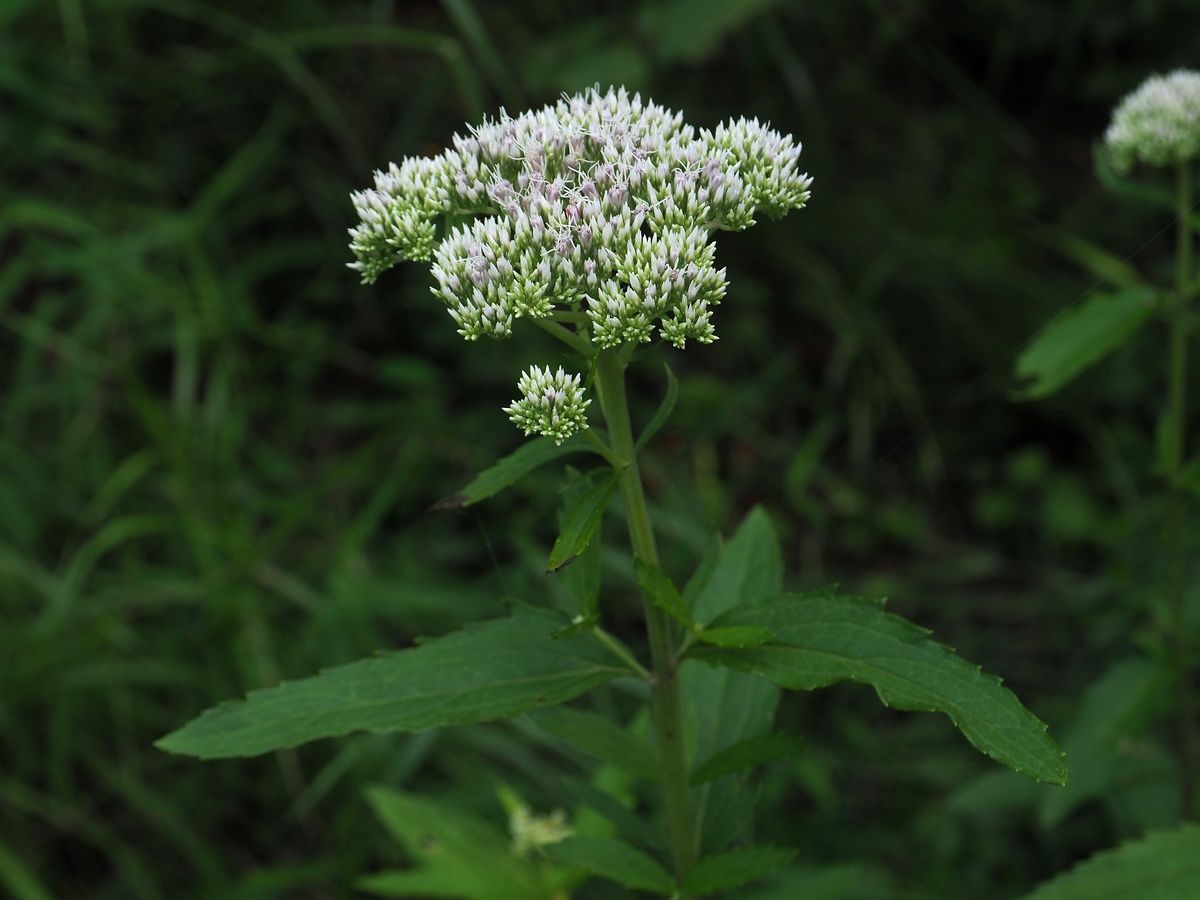
Eupatorium, also known as Joe-Pye weed, is a fascinating plant that holds a special place in the world of botanical enthusiasts. With its tall stalks adorned with clusters of vibrant pink or purple flowers, it can make quite a statement in any garden or natural landscape. But there is so much more to Eupatorium than meets the eye. From its diverse species to its historical and medicinal uses, this plant has a rich and intriguing background.
In this article, we will explore 19 fascinating facts about Eupatorium that will pique your curiosity and deepen your appreciation for this remarkable plant. Whether you are a seasoned gardener, a nature lover, or simply wish to expand your knowledge about the world of plants, you are in for a treat. So, let’s dive in and uncover the hidden wonders of Eupatorium!
Key Takeaways:
- Eupatorium, also known as Joe-Pye weed, is a diverse and resilient plant native to the Americas. Its tall stature, long blooming period, and attractiveness to pollinators make it a valuable addition to any garden.
- With its rich history, medicinal properties, and ability to attract butterflies and bees, Eupatorium is a fascinating and beneficial plant for both gardeners and nature enthusiasts. Its adaptability and beauty make it a standout choice for any landscape.
Eupatorium is named after a Greek king.
The genus name Eupatorium comes from the Greek word “Eupator” which means “noble father.” This name was given in honor of Mithridates VI Eupator, a Greek ruler known for his extensive knowledge of herbal medicine.
It has over 40 different species.
Eupatorium is a diverse genus that includes more than 40 recognized species. Each species has its own distinct characteristics, such as height, leaf shape, and flower color, adding to the overall beauty and variety of the plant.
Eupatorium is native to North and South America.
Most species of Eupatorium are native to the Americas, ranging from Canada down to Argentina. They thrive in different habitats, from moist woodlands to open grasslands.
Joe-Pye weed is a common name for Eupatorium.
The name “Joe-Pye weed” refers to several species of Eupatorium. Legend has it that a Native American healer named Joe Pye used this plant to cure various ailments, leading to the common name.
Eupatorium flowers are attractive to pollinators.
Eupatorium produces clusters of small, nectar-rich flowers that attract a myriad of pollinators, including bees, butterflies, and hummingbirds. This makes it a valuable plant for supporting pollinator populations.
Some Eupatorium species can reach impressive heights.
While some Eupatorium species grow to modest heights of around 3 to 4 feet, others can soar up to 8 feet or more. Their tall stature adds vertical interest to gardens and landscapes.
Eupatorium is known for its herbaceous perennial nature.
Most Eupatorium species are herbaceous perennials, meaning they die back to the ground during the winter and re-emerge from the roots in the spring. This makes them reliable and low maintenance garden plants.
This plant has a long blooming period.
Eupatorium delights with its extended blooming period, often starting in mid-summer and lasting well into the fall season. Its flowers create a stunning display of colors that enhance any garden.
Eupatorium leaves have a distinct fragrance.
When you rub the leaves of Eupatorium between your fingers, you’ll notice a pleasant aroma. This distinctive fragrance can vary between species but is often described as sweet or minty.
It has a reputation for being deer resistant.
Eupatorium has a natural resistance to deer browsing, making it an excellent choice for gardens in regions where deer are common. This quality ensures that your Eupatorium plants will remain undisturbed.
Some Eupatorium species have medicinal properties.
Various Native American tribes have historically used certain Eupatorium species for their medicinal properties. These plants were believed to alleviate colds, fevers, and digestive issues.
Eupatorium can tolerate wet soil conditions.
Many species of Eupatorium thrive in moist soil conditions and can even tolerate areas with poor drainage. This makes them ideal choices for rain gardens and areas prone to wetness.
It is a great choice for attracting butterflies to your garden.
Eupatorium’s vibrant flowers are highly attractive to butterflies, making it a wonderful plant to include in butterfly gardens. It provides a valuable food source and habitat for these delicate creatures.
Eupatorium has various common names.
Aside from Joe-Pye weed, Eupatorium is known by other common names such as gravel root, trumpetweed, and boneset. These names reflect the plant’s diverse folklore and historical uses.
Some Eupatorium species are endangered.
Due to habitat destruction and other factors, a few species of Eupatorium are considered endangered. Efforts are underway to protect and conserve these rare and precious plants.
Eupatorium can add vertical interest to garden designs.
With its tall growth habit and appealing flowers, Eupatorium can be used effectively in garden designs to create vertical focal points and add visual interest to borders and landscapes.
It is relatively easy to grow Eupatorium from seeds.
If you would like to grow Eupatorium in your garden, you can start with seeds. With proper care and the right growing conditions, you can successfully germinate and establish these beautiful plants.
Eupatorium is a valuable source of nectar for bees.
As bees face declining populations worldwide, the presence of nectar-rich flowers like those of Eupatorium becomes crucial. By planting Eupatorium, you can contribute to the preservation of these essential pollinators.
It can tolerate a range of soil conditions.
Eupatorium is adaptable to diverse soil types, including loam, clay, and sandy soils. However, it prefers soils with good drainage and sufficient organic matter for optimal growth.
19 Fascinating Facts About Eupatorium demonstrate the remarkable qualities of this stunning plant. Whether you’re a gardening enthusiast or simply appreciate the wonders of nature, Eupatorium is a remarkable addition to any landscape. Its beauty, resilience, and ecological benefits make it an excellent choice for both gardens and conservation efforts.
Conclusion
In conclusion, Eupatorium, also known as Joe-Pye weed, is a fascinating plant with a rich history and numerous unique characteristics. From its medicinal uses to its role in attracting pollinators, Eupatorium has captivated the attention of both researchers and nature enthusiasts alike. Whether you’re interested in gardening, herbal medicine, or simply appreciating the beauty of nature, Eupatorium is a plant worth exploring. Its tall, eye-catching blooms and ability to thrive in various environments make it a versatile addition to any garden or landscape. So, the next time you come across Eupatorium, take a moment to appreciate its beauty and significance in the world of plants.
FAQs
1. What is Eupatorium?
Eupatorium is a genus of flowering plants in the Asteraceae family, commonly known as Joe-Pye weed. It consists of approximately 40 different species, predominantly found in North America.
2. How tall can Eupatorium grow?
Depending on the species, Eupatorium plants can range in height from 2 to 8 feet (60 to 240 cm). Some species can even grow taller under ideal conditions.
3. What are the medicinal uses of Eupatorium?
Eupatorium has a long history of medicinal use. It has been traditionally used to treat various ailments, including fever, coughs, and digestive disorders. The plant contains compounds with anti-inflammatory and diuretic properties.
4. What type of soil does Eupatorium prefer?
Eupatorium thrives in moist, well-drained soil. It can tolerate a wide range of soil types, including clay, sand, and loam. However, it prefers fertile soil that retains some moisture.
5. Can Eupatorium attract pollinators?
Yes, Eupatorium is known for attracting pollinators such as butterflies and bees. Its vibrant, nectar-rich flowers serve as a valuable food source for these beneficial insects.
6. Is Eupatorium easy to grow?
Eupatorium is generally easy to grow and low-maintenance. It is a hardy plant that can adapt to different growing conditions. As long as the soil is well-drained and receives ample sunlight, Eupatorium can flourish in the garden.
7. Can Eupatorium be invasive?
Some species of Eupatorium have the potential to become invasive, particularly in favorable growing conditions. It is important to research the specific species and choose cultivars that are non-invasive, especially if you are planting in a natural or wild setting.
8. When is the best time to plant Eupatorium?
Eupatorium is typically planted in the spring or fall when the soil is still warm. This allows the plant to establish roots before the onset of extreme temperatures. However, it can be planted at any time as long as the weather conditions are suitable.
Incorporating Eupatorium into your garden or landscape can not only add beauty and visual interest but also contribute to the overall ecological health of your surroundings. Its versatility, medicinal uses, and ability to attract pollinators make it a valuable plant to consider. So, go ahead and explore the world of Eupatorium to discover more about this fascinating and charming plant.
Eupatorium's fascinating qualities make it a captivating plant for gardeners and nature enthusiasts alike. Delving deeper into the world of medicinal plants, snakeroot offers surprising benefits and intriguing facts worth exploring. For those interested in native American flora, Joe Pye weed's astounding characteristics and ecological importance are sure to pique your curiosity. Uncover the secrets and wonders of these remarkable plants, and expand your knowledge of the diverse and enchanting world of botany.
Was this page helpful?
Our commitment to delivering trustworthy and engaging content is at the heart of what we do. Each fact on our site is contributed by real users like you, bringing a wealth of diverse insights and information. To ensure the highest standards of accuracy and reliability, our dedicated editors meticulously review each submission. This process guarantees that the facts we share are not only fascinating but also credible. Trust in our commitment to quality and authenticity as you explore and learn with us.


